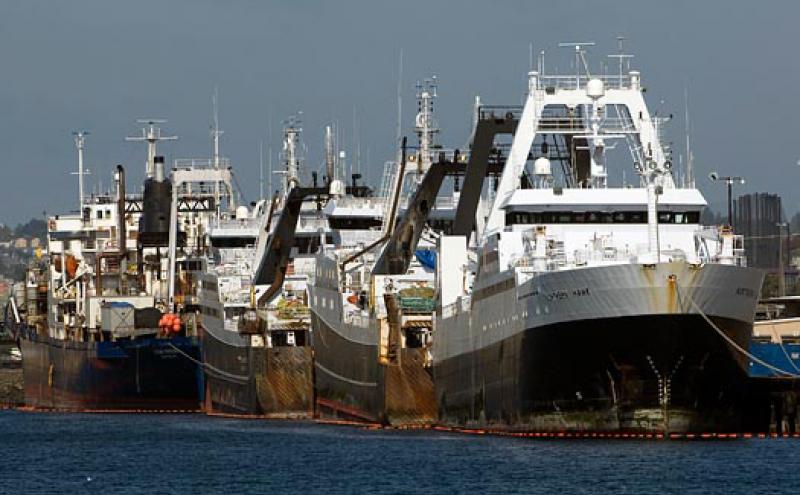
SEATTLE—The Port of Seattle and the Washington Maritime Federation released today a detailed analysis of the North Pacific fishing fleet infrastructure and factors related to modernizing the fishing fleet.
“Modern ships are safer, more sustainable and more profitable, but also require more capital,” said Ted Fick, Port of Seattle CEO. “As a business and infrastructure partner to the fishing fleet, we need to make sure we capture this opportunity for our regional economy.”
The report also finds that while the North Pacific fishing fleet plans to spend $1.6 billion on modernization in the next decade, shipyard competition, economic conditions, and public policy will determine how much of this vessel construction will be done in Puget Sound.
“The fishing industry has provided generations of Washingtonians with good paying jobs and sustainably harvested seafood,” said Mark Gleason, Director of the Washington Maritime Federation. “With the right investment we can keep—and grow—jobs here in our maritime industry.”
The North Pacific fleet includes vessels of a wide range of size and value. The average vessel length ranges from 96 feet for smaller trawlers, to over 400 feet for floating processors, or ‘motherships.’ The average 2014 gross revenues for these vessels ranged from $2 million for trawl vessels to $16 million for American Fisheries Act (AFA) catcher/processors.
The report predicts that shipbuilding will reach a relative high point in the next ten years, averaging three to five vessels per year, compared to just one vessel per year for the last 15 years. Current vessel replacement costs vary widely by fishery, ranging between $15 and $118 million. Highlights from the report include:
Potential job and economic impact:
If Washington State can capture fifty percent of the modernization projects (versus 33% today), the region can generate 510-750 middle class jobs generating approximately $40 to $60 million in wages. Annual output will average between $108 million and $160 million in over the next decade, totaling $1.3 billion
Obstacles to modernization include:
- Financing
- Access to facilities and infrastructure
- Workforce issues (aging and training)
- Business climate concerns.
The McDowell Group, a research and consulting firm based in Alaska and Washington, worked with a wide variety of stakeholders, including vessel owners, seafood companies, shipyards, marine architects, regulatory agencies, and lending institutions to draft this report. Other data sources included the National Marine Fisheries Service and the North Pacific Fisheries Management Council.
A 2012 economic impact study found the state’s maritime industry accounted for 2,100 businesses, $4.1 billion in wages, and nearly 58,000 jobs. Of this total, economic impacts associated with the fishing and seafood processing industry supported $1.1 billion in wages and 15,400 jobs.
About the Washington Maritime Federation
The Washington Maritime Federation is an association of associations, comprised of maritime organizations, ports, businesses, organized labor, workforce development and economic development organizations that have come together to provide a unified voice for the maritime industry in Washington State.
About the Port of Seattle
Founded in 1911, the Port owns and operates Seattle-Tacoma International Airport, two cruise ship terminals, Fishermen’s Terminal—home of the North Pacific fishing fleet, one grain terminal, a public cargo terminal, four public marinas, and manages a number of real estate assets for financial return and economic advantage. The Port’s operations currently help create nearly 200,000 jobs and $7 billion in wages throughout the region. Over the next 21 years, the port’s “Century Agenda” seeks to create an additional 100,000 jobs through economic growth while becoming the nation’s leading green and energy-efficient port. Learn more at www.portseattle.org.

